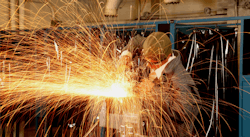A Peek Inside the Manufacturing Renaissance
Is the manufacturing renaissance that everyone’s been talking about a real thing? And if it’s real, is it industry-wide or confined to a few select sectors? Also, how is it affecting employment and technology buying and implementation?
These questions were just a few of the many questions the editors at Automation World kept asking as we read article after article about the manufacturing renaissance—all of which seemed to focus on a handful of anecdotal stories or select economic data. To get a feel for what this renaissance feels like—or if it’s even tangible—on the front lines of manufacturing, we asked our readers for their insight on the subject.
After receiving some 500 responses to the survey, we can say with some confidence that the manufacturing renaissance is a real thing and our readers, by and large, are seeing a difference in their companies’ operations as a result. (Note: We realize that 500 responses for such a survey does not make it statistical gold, so to speak, but it does help shed more light on the issue than a few anecdotal examples).
Survey results show that 45 percent of respondents have seen new hiring take place at their facilities as a result of increased business in the past few years. In addition, 17 percent of respondents report that their facility has added extra shifts and 11 percent of respondents’ companies have brought manufacturing operations back to the U.S. from overseas. In addition, 27 percent report that their companies are planning to or are actively opening new facilities as a result of the upsurge in U.S. manufacturing business.
Sixty percent of respondents report that the manufacturing resurgence has lead to purchases—or planned purchases—of new equipment for their facilities. Though spending is widely dispersed across technology categories, the sectors targeted for the highest level of purchases include controllers (e.g., PLCs and DCS), operations software (e.g., MES and Supply Chain), industrial networking, and design software.
Current manufacturing sector hot spots, according to respondents and additional interviews conducted as a result of the survey, include aerospace, chemicals, oil & gas, medical devices, biotechnology and industries that need complex, precision-made parts.
Despite the clearly positive response we received about the manufacturing resurgence, 25 percent of respondents said U.S. manufacturing is still in decline. These respondents pointed to experience with continued job cuts, lower wages, fewer benefits and more work offshored to China, Mexico and other lower-wage countries. Looking at the industries most commonly associated with these responses indicate that most of these respondents are employed in facilities that produce what would be considered low-margin commodity products.
A feature article reporting full results from this survey will appear in the May 2014 issue of Automation World.
About the Author
David Greenfield, editor in chief
Editor in Chief

Leaders relevant to this article:
